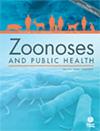In pursuit of enhancing prevention efforts for the notably high endemic Opisthorchis viverrini infection in lower Mekong sub-region countries, particularly Thailand and Laos, this cross-sectional study investigated the transmission potential of O. viverrini and other intestinal helminths along the Thailand-Laos border in seven Thai villages.
Human and pet faecal samples, Bithynia snails and cyprinid fish were analysed for helminth infections. Additionally, a questionnaire survey assessed relevant risk factors among the human population. Two groups of helminth infections were detected in humans: foodborne infections (FBIs) including O. viverrini, minute intestinal flukes (MIFs), and Taenia spp., and soil-transmitted infections (STIs) including hookworm and Strongyloides stercoralis, with prevalence rates of 7.4%, 0.5%, 2.5%, 0.5%, 2.5% and 3%, respectively. Smoking was identified as a risk factor for O. viverrini infection [adjusted odds ratios (ORa) = 3.12, 95% confidence intervals (CI): 1.33–7.30, p = 0.009] and FBIs (ORa = 2.47, 95% CI: 1.14–5.33, p = 0.022), while male was a risk factor for FBIs (ORa = 2.62, 95% CI: 1.16–5.94, p = 0.021). In dogs, hookworm, Toxocara spp., Spirometra mansoni, Trichuris vulpis and Hymenolepis diminuta were identified with prevalence rates of 35.6%, 8.1%, 8.1%, 1.2% and 1.2%, respectively. In cats, hookworm, Toxocara spp., S. mansoni, Strongyloides spp., Platynosomum fastosum, MIFs and H. diminuta were identified with prevalence rates of 50%, 17.9%, 10.7%, 7.1%, 3.6%, 3.6% and 3.6%, respectively. Bithynia snails showed 2% virgulate and 0.7% unknown cercariae infections, while among 19 cyprinid fish species, only unknown metacercariae were found.
Our findings underscore the necessity of an integrated approach following the One Health concept to effectively combat these parasitic diseases while addressing human, animal and environmental health.


